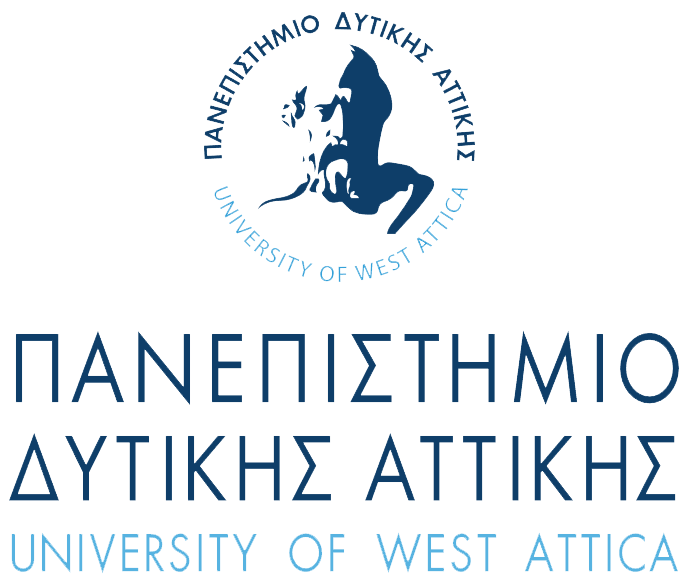Εκδηλώσεις - Συνέδρια
- Λεπτομέρειες
Σας ενημερώνουμε ότι το Κέντρο έρευνας-Μουσείο Τσιτσάνη συμμετέχει ως εταίρος στο Έργο με τίτλο: «ΚΛΙΜΑΤΙΚΗ ΜΝΗΜΟΣΥΝΗ: Σχεδιασμός και υλοποίηση δράσεων για την προστασία από την κλιματική αλλαγή των τοιχογραφιών στις σπηλιές «Ασκηταριά» Λάρισας, καθώς και στην παρακολούθηση σε πραγματικό χρόνο των μουσειακών αντικειμένων του Μουσείου Τσιτσάνη στα Τρίκαλα», που χρηματοδοτεί το ΠΡΑΣΙΝΟ ΤΑΜΕΙΟ.
Έχει ως στόχο την ανάπτυξη και εφαρμογή, πολιτικών και δράσεων για την προστασία των μνημείων της πολιτιστικής κληρονομιάς που απειλούνται από την κλιματική αλλαγή.
Δείτε την Αναλυτική Πρόσκληση εδώ
Δείτε το Πρόγραμμα του Σεμιναρίου εδώ
- Λεπτομέρειες
In the framework of the implementation of the European Program “T-Crepe” project (KA2: Cooperation for innovation and the exchange of good practices - Knowledge Alliances) a training workshop organized by UNIWA, which conducted in the period 2-6 November 2021 at the premises of Hellenic Clothing Industry Association and targeted to:
• The members who involved to the project
• Staff of university • Students
• Representatives of the industry
- Λεπτομέρειες
Hybrid Conference Location: 64, The Exchange Buildings, Republic Street, Valletta & Online Date: Friday, 26th November 2021
Registration for online https://us06web.zoom.us/meeting/register/tZckdOqqrz4oGt3T9Mf5vzuPamwDsHs19AQP
Registration for attendance in person (Valletta) https://docs.google.com/forms/d/1mgcUpxmX_dVh2MX2SEzpJi0M-O5FumYEfRymhg0GbGk/edit?usp=sharing
- Λεπτομέρειες
Διεξαγωγή σεμιναρίου για τον Κλάδο της Κλωστοϋφαντουργικής βιομηχανίας στην Τυνησία «WINTEX 2nd capacity building training» (25-30/10/2021) στις εγκαταστάσεις του Πανεπιστημίου Δυτικής Αττικής
Στα πλαίσια υλοποίησης του Ευρωπαϊκού Προγράμματος “Wintex- Weaving innovation among academia and industry in the Tunisian textile sector” wintexproject.eu πραγματοποιήθηκε σεμινάριο εκπαίδευσης του προσωπικού Πανεπιστημίων της Τυνησίας από 25-30/10/2021 στις εγκαταστάσεις του Εργαστηρίου του Τμήματος Μηχανικών Βιομηχανικής Σχεδίασης και Παραγωγής «Σχεδίασης και Ανάπτυξης Πλεκτών καινοτόμων προϊόντων Κλωστοϋφαντουργίας και Ένδυσης - ΣΑΠΚΕ». Στο διάστημα αυτό διεξήχθησαν εργαστήρια (workshops) και μαθήματα από το διδακτικό προσωπικό του Τμήματος, τα οποία παρακολούθησαν 12 μέλη των εμπλεκόμενων στο πρόγραμμα Πανεπιστημίων της Τυνησίας: "ISET of Ksar-Hellal», ISMMM και USF.
Το περιεχόμενο της εκπαίδευσης αφορούσε τεχνολογίες για παραγωγή κλωστοϋφαντουργικών προϊόντων φιλικών προς το περιβάλλον, ψηφιακή εκτύπωση κλωστοϋφαντουργικών υφασμάτων, ασύρματες τεχνολογίες για «ευφυή» κλωστοϋφαντουργικά προϊόντα, περιβαλλοντικά πρότυπα και σήμανση προϊόντων και ηλεκτρονικό εμπόριο. Επίσης, στα πλαίσια της εκπαίδευσης πραγματοποιήθηκαν επισκέψεις σε εργαστήριο κατασκευής υφασμάτων και κέντρο ανακύκλωσης υλικών.
- SummerSchool για τη διαχείριση των αστικών στερεών αποβλήτων και την Αειφόρο Ανάπτυξη
- 4ο Πανελλήνιο Συνέδριο Ψηφιοποίησης Πολιτιστικής Κληρονομιάς 2021 (EuroMed 2021)
- DIGITEX PROJECT KICK OFF MEETING
- 33ο Διεθνές Συνέδριο - Ινστιτούτο Πολιτισμού, Δημοκρατίας και Εκπαίδευσης
- COST Action “European Network to connect research and innovation efforts on Advanced Smart Textiles” (CONTEXT) CA17107
- ERASMUS 2021 - 7-11 june
- 3D Fashion Summit- 20th May 2021
- Special Issue "Precursory Phenomena Prior to Earthquakes"
- DIFME Thematic event project - Invitation to the Webinar: "The digital marketing in self entrepreneurship"
- Αρχιτεκτονικός Διαγωνισμός Φοιτητών 2021



